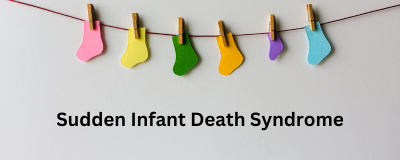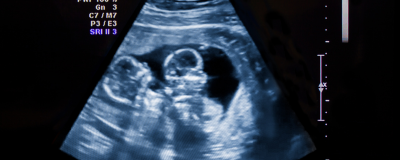
FEATURE

New Evidence Strengthens Link Between Cannabis Use in Pregnancy and Poor Birth Outcomes
Time to read: 01:54
Source: JAMA Paediatrics
Feature
Text

Comparing Antibiotics and Appendicectomy for Uncomplicated Appendicitis in Children
Time to read: 02:49. We summarise the findings of a study published in the Lancet aimed to assess whether antibiotic treatment for non-perforated appendicitis in children is inferior to appendicectomy, particularly in terms of treatment failure rates.
Source: The Lancet
Text

Venous thromboembolism prophylaxis in high-risk paediatric trauma patients
Time to read: 02:01 This prospective multi-institutional cohort study evaluated the use of chemical venous thromboembolism (cVTE) prophylaxis in high-risk pediatric trauma patients.
Source: JAMA Surgery
Text

American Academy of Paediatrics releases the first clinical guidelines for opioid prescriptions in children with acute pain
Time to read: 01:34. New guidelines by the American Academy of Pediatrics (AAP) recommend prescribing the lowest effective opioid doses for children with acute pain, limiting prescriptions to five days, and using a multimodal pain management approach that includes non-opioid treatments and co-prescribing naloxone to prevent overdose.
Source: Pediatric, Journal of AAP
Text

Newborn metabolic markers may help identifying infants at high risk for Sudden Infant Death Syndrome
Time to read: 1:13. Newborns who had an atypical pattern of metabolites were more than 14 times as likely to die of sudden infant death syndrome compared to infants who had more typical metabolic patterns
Source: JAMA Paediatrics
Text

Phase 3 Trial Confirms Ziresovir's Efficacy in Reducing RSV Symptoms in Infants
Time to read:01:23. Phase 3 trial results indicate that Ziresovir, a new drug, significantly reduces respiratory syncytial virus (RSV) symptoms in infants, highlighting its potential as an effective treatment option.
Source: NEJM
Text

Increased Seizure Risk in Children Linked to First-Generation Antihistamines: Findings from a Nationwide Cohort Study
Time to read: 02:04. In a recent study published in JAMA, researchers Kim JH, Ha EK, Han B, et al. investigated the association between first-generation antihistamines and seizure risk in young children using a population-based dataset.
Source: NEJM
Text

Demographic and aetiological factors of paediatric status epilepticus: a South African retrospective observational study
Time to read 01:23 Convulsive status epilepticus (CSE) is a severe neurological emergency in children, lasting more than 5 minutes or with recurrent seizures without regaining consciousness. Global prevalence varies, with higher rates in early childhood, and a higher incidence in sub-Saharan Africa, often due to infectious diseases. Febrile seizures are common, particularly in children under 5.
Source: South African Journal of Child Health
Text

Glucose-6-phosphate dehydrogenase deficiency and neonatal indirect hyperbilirubinemia: a retrospective cohort study among 40,305 consecutively born babies
Time to read: 01:56. G6PD deficiency is a prevalent enzymatic disorder affecting over 400 million individuals globally, with higher rates in tropical regions such as Africa, the Mediterranean, and Southeast Asia, possibly due to its protective effect against severe malaria. Among African American males, the prevalence is around 11–12%, with carriers comprising 24%.
Source: Journal of Perinatology
Text

Different risk factors for adverse outcomes in singleton, twin pregnancies
Time to read: 01:46. Published in July 2023 in The Journal of Maternal-Fetal & Neonatal Medicine, this study explores the increasing global prevalence of twin pregnancies, associated with assisted reproductive technologies, emigration, and delayed pregnancies at advanced maternal age (AMA).
Source: The Journal of Maternal-Fetal & Neonatal Medicine
Text

Maternal Vaccine Effectiveness Against Influenza-Associated Hospitalizations and Emergency Department Visits in Infants
Time to read: 01:10. Influenza virus infection during pregnancy poses risks for severe maternal disease and adverse birth outcomes. Inactivated influenza vaccine is considered safe and effective, but data after the 2009 H1N1 pandemic are limited
Source: JAMA Paediatrics
Text

Treatment-to-target strategies decreased pain for children with non-systemic JIA
Time to read: 1:10. The BeSt for Kids study, a Dutch multicenter randomized trial, focused on non-systemic Juvenile Idiopathic Arthritis (JIA) patients aged 2 to 16 years with newly diagnosed JIA lasting less than 18 months.
Source: JAMA Paediatrics
Text

Researchers confirm dosing efficacy of pediatric HIV drug combination.
Time to read: 03:00. There is a need for effective antiretroviral treatments for infants and young children with HIV-1, who often face challenges with adherence and limited treatment options.
Source: The Lancet
Text

Lower IQ scores associated with diabetic ketoacidosis in young type 1 diabetes patients.
Time to read: 00:57. Young children diagnosed with type 1 diabetes (T1D) face an increased risk of cognitive deterioration after experiencing diabetic ketoacidosis (DKA), although research on cognitive function in T1D primarily focuses on school-age children.
Source: Endocrinology, diabetes & metabolism
Text

Pulmonary Dysfunction after Pediatric COVID-19
Time to read: 02:00. Lung parenchymal changes resulting from COVID-19 are less conspicuous and less pronounced in the pediatric population, creating an unmet clinical demand for a more precise characterization of pulmonary manifestations following SARS-CoV-2 infection in children and adolescents
Source: Radiology
Text

Effect of Breastfeeding and Preterm Births on the Severity of LRTIs and Associated Risk of Hospitalization in Infants and Toddlers
Time to read: 01:55. Lower respiratory tract infections (LRTIs) pose a significant risk to infants and children under five, especially in developing countries. This 2022 study, published in Global Paediatric Health by Demir et al., explored how breastfeeding duration infants with a preterm birth history affects the progression of LRTIs in infants.
Source: Global Paediatric Health
Text

Serious Bacterial Infections in Young Febrile Infants With Positive Urinalysis Results
Time to read: 01:19. Urinary tract infections in very young infants are thought to have a high association with bacterial meningitis. For this reason, routine lumbar punctures are often performed on these infants. According to the researchers of this paper, Mahajan et a.l, the benefits of such a common intervention were unknown.
Source: American Academy of Pediatrics
Text

Association Between the First-Hour Intravenous Fluid Volume and Mortality in Pediatric Septic Shock
Time to read: 01:07. This retrospective cohort study aimed to determine if receiving more than or equal to 30 mL/kg of intravenous fluid within the first hour of arrival at the emergency department (ED) is linked to sepsis-attributable mortality in children with hypotensive septic shock. The study was conducted in 57 EDs as part of a quality improvement collaborative.
Text


